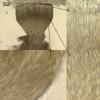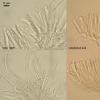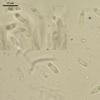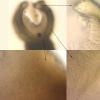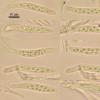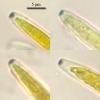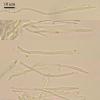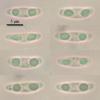
18-12-2025 17:23
 Bruno Coué
Bruno Coué
Bonjour,je serais heureux d'avoir votre avis sur c

18-12-2025 21:17
Pol DebaenstThe identification took me to Byssonectria deformi

18-12-2025 18:07
Margot en Geert VullingsThese plumes were found on rotten wood.They strong

17-12-2025 18:35
 Michel Hairaud
Michel Hairaud
Bonjour à tous/Hi to everyone I am passing along

15-12-2025 15:48
 Danny Newman
Danny Newman
Melanospora cf. lagenaria on old, rotting, fallen

15-12-2025 15:54
 Johan Boonefaes
Johan Boonefaes
Unknown anamorph found on the ground in coastal sa

15-12-2025 21:11
 Hardware Tony
Hardware Tony
Small clavate hairs, negative croziers and IKI bb

15-12-2025 07:09
 Danny Newman
Danny Newman
indet. Rutstroemiaceae sp. on unk. fallen leavesMc
The main difference: there are two types of paraphyses: filiform and lanceolate (I don't think that it is underdeveloped, rather two different).
Apothecia turbinate, short-stipitate, up to 0,5 mm in diametre, 0,5 mm high, outer surface smooth, brown, edge (collar) lighter, narrow, hymenium grayish, concave; growing in dense groups.
Excipulum from textura oblita; asci cylindrical, with croziers, with euamyloid pore, about 50 x 6,5; paraphyses of two types: filiform and lanceolate in one apothecium, filiform scarsely branched, 1,5 mk broad, some enlarged at tips, lanceolate exceeding the asci by 10 mk, up to 3,5 mk in largest part, with 2-3 septa in lower part, may be with thin outbranches; spores ellipsoid, slightly curved, with two big guttules (vital, i suppose it was in water), 10,7 (10-11,8) x 3,3 (3,1-3,5) (N=12).
On dead leaves of Milium effususm, coniferous mixed forest, N61,086961 E69,466226, 12.06.2012.

Incredible! So you did these vital photos in June on the fresh specimen. The spores are alive, yes, and also the paraphyses look so. Only the asci are all dead.
Could you please send me these images in higher resolution? (zotto@arcor.de) The paraphyses are the important thing I wished to see. In Cyathicula they are always prominently multiguttulate, but here they look eguttulate. That would be a further reason not to accept the synonymy of the two genera as proposed by Dennis.
There is another species or variety, C. gramineum var. incertellum with slightly smaller spores. In both I saw long and wider, and narrow and short paraphyses.
Did you also check with IKI? The shape of apical ring is different from Cyathicula.
Zotto

For the identity I feel this group needs restudy. In Dennis 1956 Phialea incertella has spores 6-8 x 1.5-2, too small, P. stipae (= gramineum) 7-10 x 2.5-3 (with two big oil drops after carpenter), so quite good. There are more names which are possibly synonyms of the other two.
So I would identify your fungus as Crocicreas gramineum. But the three samples I have studied all have these big oil drops.
Zotto



